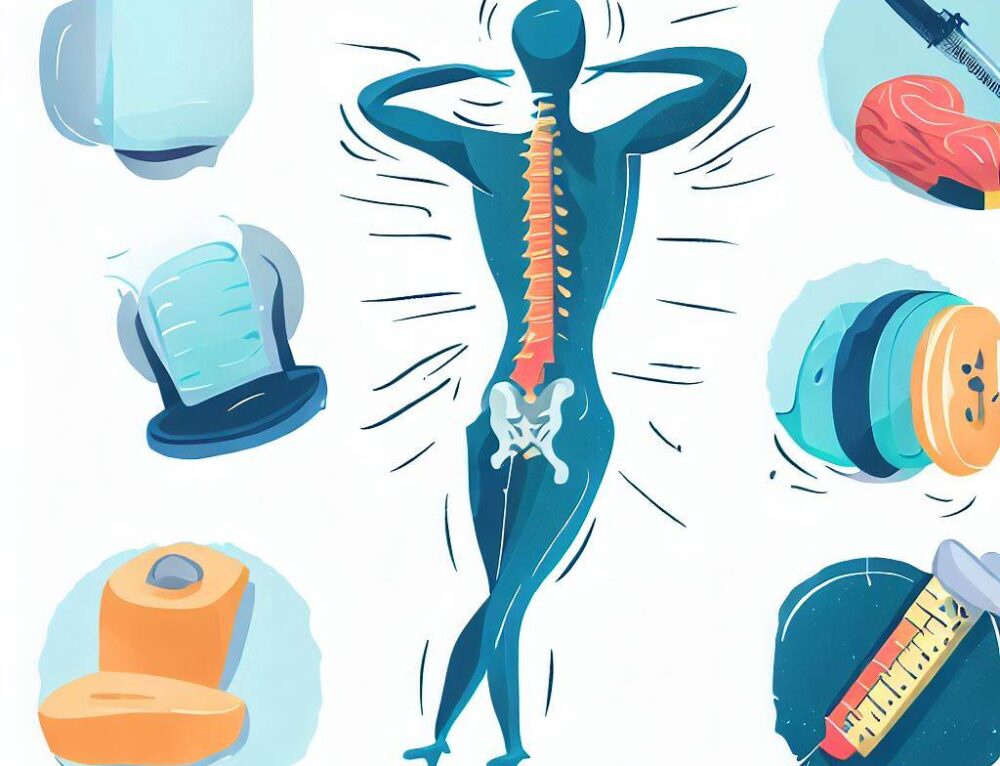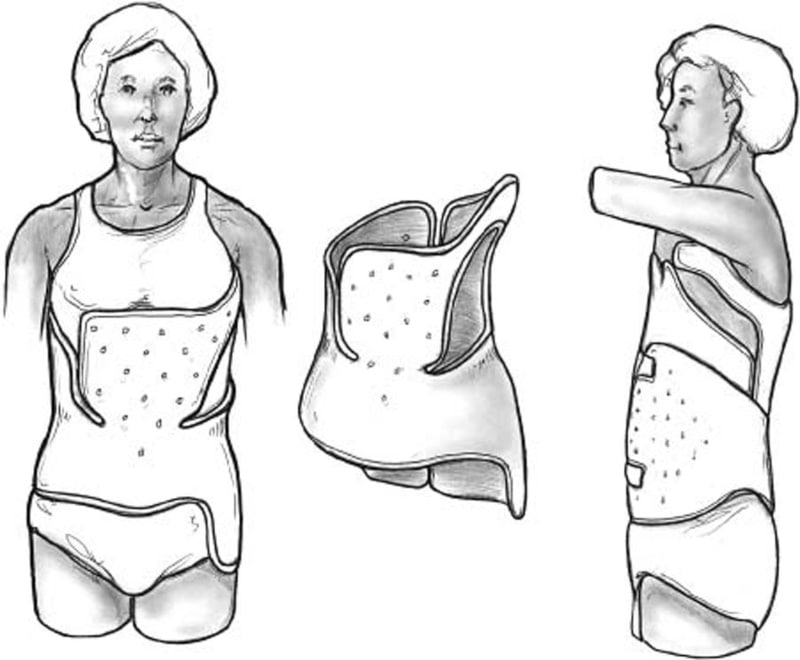Scoliosis is a medical condition characterized by an abnormal curvature of the spine. It affects millions of people worldwide, with varying degrees of severity. While mild cases may not require treatment, moderate to severe cases often necessitate intervention to prevent further progression and alleviate symptoms. One commonly used treatment option is the Boston Brace, a custom-made orthopedic device designed to correct spinal curvature and provide support to the affected area. In this article, we will explore the intricacies of the Boston Brace, its benefits for scoliosis patients, and its role in scoliosis management.

Understanding Scoliosis: Causes and Symptoms
Before delving into the specifics of the Boston Brace, it is essential to understand the underlying causes and symptoms of scoliosis. Scoliosis can be classified into two main types: idiopathic scoliosis, which has no known cause, and secondary scoliosis, which is caused by an underlying condition such as muscular dystrophy or cerebral palsy. The most common form of scoliosis is idiopathic scoliosis, which typically develops during adolescence.
The symptoms of scoliosis can vary depending on the severity of the curvature. Mild cases may only exhibit slight asymmetry in the shoulders or hips, while more severe cases can lead to visible deformities, such as a hump or rib prominence. Additionally, scoliosis can cause back pain, limited mobility, and respiratory issues if left untreated.

What is the Boston Brace?
The Boston Brace, also known as the Boston TLSO (thoracolumbosacral orthosis), is a custom-made brace designed to halt the progression of scoliosis and correct spinal curvature. It is primarily used for patients with moderate to severe scoliosis, particularly during the adolescent growth spurt when the curvature is most likely to progress. The Boston Brace is a non-surgical treatment option that aims to provide support to the spine and encourage proper alignment.

How Does the Boston Brace Work?
The Boston Brace works by applying three-point pressure to the spine, which helps to correct the abnormal curvature. It consists of a rigid plastic shell that encases the torso, extending from the underarm to the hips. The brace is custom-made for each patient using a plaster mold of their torso, ensuring a precise fit. The Boston Brace is designed to be worn for an extended period, typically 18 to 23 hours a day, to achieve optimal results.

The Design and Components of the Boston Brace
The Boston Brace is composed of several components that work together to provide support and correction. The main component is the rigid plastic shell, which is custom-made to fit the patient’s specific curvature. The shell is lined with a soft padding material to enhance comfort and prevent skin irritation. Additionally, the brace incorporates straps and buckles to secure it in place and allow for adjustments as needed.
Fitting and Adjusting the Boston Brace
The fitting process for the Boston Brace involves taking a plaster mold of the patient’s torso. This mold is used to create a custom-made brace that fits snugly and provides optimal support. During the fitting process, the orthotist will make any necessary adjustments to ensure a proper fit and alignment. It is crucial for patients to communicate any discomfort or pressure points to the orthotist, as adjustments can be made to alleviate these issues.
Wearing the Boston Brace: Daily Routine and Maintenance
Wearing the Boston Brace is a commitment that requires dedication and adherence to a daily routine. Most patients are advised to wear the brace for 18 to 23 hours a day, removing it only for activities such as bathing and sports. It is essential to follow the orthotist’s instructions regarding the wearing schedule to achieve the desired results. Additionally, proper maintenance of the brace is crucial to ensure its effectiveness. Regular cleaning and inspection of the brace, as well as replacing any worn-out components, are necessary to maintain its functionality.
Benefits of the Boston Brace for Scoliosis Patients
The Boston Brace offers several benefits for scoliosis patients. Firstly, it helps to halt the progression of the spinal curvature, preventing further deformity and potential complications. By applying three-point pressure to the spine, the brace encourages proper alignment and reduces the abnormal curvature. This can lead to improved posture and a more symmetrical appearance.
Furthermore, the Boston Brace provides support to the spine, which can alleviate back pain and discomfort associated with scoliosis. The brace helps to distribute the weight evenly across the spine, reducing strain on the affected areas. This can significantly improve the quality of life for scoliosis patients, allowing them to engage in daily activities with less pain and discomfort.
Effectiveness of the Boston Brace in Treating Scoliosis
The effectiveness of the Boston Brace in treating scoliosis has been well-documented. Numerous studies have shown that the brace can effectively halt the progression of spinal curvature in the majority of cases. According to a study published in the Journal of Pediatric Orthopaedics, the Boston Brace was successful in preventing curve progression in 72% of patients with idiopathic scoliosis. Another study published in the Spine Journal found that the brace was effective in preventing surgery in 74% of patients.
It is important to note that the success of the Boston Brace depends on various factors, including the severity of the curvature, the patient’s age, and their compliance with wearing the brace as instructed. Regular follow-up appointments with the orthotist are crucial to monitor progress and make any necessary adjustments to the brace.
Potential Side Effects and Risks of the Boston Brace
While the Boston Brace is generally safe and well-tolerated, there are potential side effects and risks associated with its use. Some patients may experience skin irritation or pressure sores due to prolonged wear of the brace. It is important to maintain good hygiene and regularly inspect the skin for any signs of irritation. Additionally, wearing the brace for an extended period can lead to muscle weakness or atrophy. Physical therapy and exercises prescribed by a healthcare professional can help mitigate these risks.
Boston Brace vs. Other Scoliosis Treatment Options
When considering scoliosis treatment options, it is essential to weigh the pros and cons of each approach. The Boston Brace is often compared to other non-surgical treatment options, such as exercise-based therapies and other types of braces. While exercise-based therapies can help improve muscle strength and flexibility, they may not be as effective in halting the progression of spinal curvature. Other types of braces, such as the Milwaukee Brace or Charleston Bending Brace, may be suitable for specific types of scoliosis but are not as widely used as the Boston Brace.
The choice of treatment ultimately depends on the individual patient’s needs and the severity of their scoliosis. Consulting with a healthcare professional, such as an orthopedic specialist or orthotist, can help determine the most appropriate treatment option.
Conclusion: The Role of the Boston Brace in Scoliosis Management
In conclusion, the Boston Brace plays a crucial role in the management of scoliosis, particularly in cases where the curvature is moderate to severe. By applying three-point pressure to the spine, the brace helps to correct the abnormal curvature and prevent further progression. The Boston Brace offers numerous benefits for scoliosis patients, including improved posture, reduced pain and discomfort, and the prevention of potential complications.
While the Boston Brace is generally effective and well-tolerated, it is important to consider potential side effects and risks associated with its use. Regular follow-up appointments with the orthotist and compliance with wearing the brace as instructed are essential for optimal results.
Ultimately, the Boston Brace is just one of many treatment options available for scoliosis. Each patient’s case is unique, and the choice of treatment should be made in consultation with a healthcare professional. With proper care and adherence to the treatment plan, the Boston Brace can significantly improve the quality of life for scoliosis patients and help them manage their condition effectively.
References
- Weinstein, S. L., Dolan, L. A., Cheng, J. C., et al. “Adolescent Idiopathic Scoliosis.” Lancet. 2008;371(9623):1527-1537. doi: 10.1016/S0140-6736(08)60658-3.
- Negrini, S., Donzelli, S., Aulisa, A. G., et al. “2016 SOSORT Guidelines: Orthopaedic and Rehabilitation Treatment of Idiopathic Scoliosis During Growth.” Scoliosis and Spinal Disorders. 2018;13:3. doi: 10.1186/s13013-018-0175-8.
- Trobisch, P., Suess, O., Schwab, F. “Idiopathic Scoliosis.” Dtsch Arztebl Int. 2010;107(49):875-883. doi: 10.3238/arztebl.2010.0875.
- Hresko, M. T. “Clinical Practice. Idiopathic Scoliosis in Adolescents.” N Engl J Med. 2013;368(9):834-841. doi: 10.1056/NEJMcp1209063.
- Bettany-Saltikov, J., Weiss, H. R., Chockalingam, N., et al. “Surgical Versus Non-Surgical Interventions in People with Adolescent Idiopathic Scoliosis.” Cochrane Database Syst Rev. 2015;2015(4). doi: 10.1002/14651858.CD010663.pub2.
- Social Security Administration. “Disability Benefits.” https://www.ssa.gov/benefits/disability/.
- Lonstein, J. E., Carlson, J. M. “The Prediction of Curve Progression in Untreated Idiopathic Scoliosis During Growth.” J Bone Joint Surg Am. 1984;66(7):1061-1071. doi: 10.2106/00004623-198466070-00008.
- Kaspiris, A., Grivas, T. B., Weiss, H. R., Turnbull, D. “Scoliosis: Review of Diagnosis and Treatment.” International Journal of Orthopaedics. 2013;37(1):34-42. doi: 10.1038/s41390-020-1047-9.
- Monticone, A., et al. “Effectiveness of a Specific Exercise Program for the Treatment of Adolescent Idiopathic Scoliosis: A Randomized Controlled Trial.” European Spine Journal. 2016;25(7):2298-2307. doi: 10.1007/s00586-016-4538-5.
- Weinstein, S. L. “Scoliosis and Spinal Deformity in Children and Adolescents.” Pediatrics. 2014;134(5):1130-1135. doi: 10.1542/peds.2014-1760.
